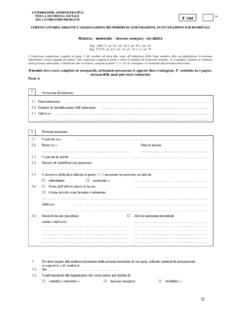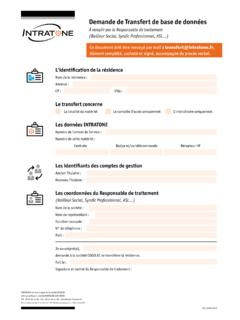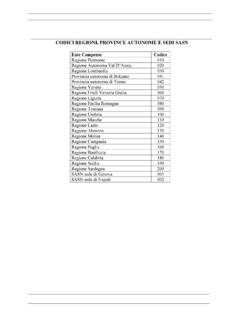Transcription of Great expectations: setting targets for students
1 Greatexpectations: setting targets for studentsPaul Martinezthe agency reportsPublished by the Learning and Skills Development AgencyFeedback should be sent to Information Services, Learning and Skills Development Agency, 3 Citadel Place, Tinworth Street, London SE11 5EF Tel 020 7962 1066 Fax 020 7840 5401 with the Charity CommissionersEditor: Manjinder Sidhu Designers: Dave Shaw and Joel Quartey Printer: Copyprint Ltd, LondonISBN 1 85338 630 8 Learning and Skills Development Agency 2001 You are welcome to copy this report for internal use within your organisation. Otherwise, no part of this publication may be reproduced, stored in a retrieval system, or transmitted in any form or by any means, electronic, electrical, chemical, optical, photocopying, recording or other wise, without prior written permission of the copyright am indebted to the following people who commented on earlier drafts of this report: Tricia Bur ton, Jon Cartmell, Kevin Conway, Billy Elliott, Frank Gill, Ruth James, Paul Machon, Iain McRober t, Anna Reisenberger and Kevin Quality and Achievement ProgrammeRun by the Learning and Skills Development Agency in partnership with the Association of Colleges (AoC).
2 We aim to reach all colleges and all levels of staff. We offer extra support to colleges that are receivingStandards Fund money to improve their practice. All our activity themes are backed by a programme of research and evaluation. The Raising Quality and Achievement Programme is sponsored by the DfEE and all activities are is now known as the Learning and Skills Development types of target are we talking about?1 Why bother with targets at all?2 Who are targets for?4 Which types of learner will benefit most from targets ?5 What target setting models are available?6 Which approach is best for which learners?11 Key features of successful target setting11 Where can I find out more?
3 15 References16 IntroductionThis report aims to encourage the wider use of target setting for individual students and trainees in the learning and skills learning and skills sector is defined here as theprovision of post-16 fur ther and continuing educationand training, funded and inspected in England by the new Learning and Skills Council. The experienceand evidence on which this repor t is based are drawnprimarily from English sources, but the principles and much of the operational detail also apply in the post-compulsory sectors in Scotland, Wales and Nor thern main focus of this report is the creation of individual targets for learners in the learning and skills sector, including those taking A-levels orScottish Highers, technical certificates, vocationalqualifications or Access courses.
4 As part of thegeneral discussion about target setting processes,this repor t also addresses the formative aspects ofvalue added. Formatively, the emphasis is on creatingtargets that enhance student learning, rather thanusing value added calculations to compareinstitutional or departmental performance. In this sense, target setting is about process rather than play an increasing role in many nationalpolicy agendas. Target setting associated with valueadded systems ( for A-levels and Scottish Highers)has moved from a minority experimental activity tobecome mainstream. Indeed, new inspection arran-gements for England explicitly anticipate greater use of value added types of target are we talking about?
5 The focus of this report is the process of settingtargets for individual students . At the risk of statingthe obvious, such targets will be: specific challenging achievable literature on which these descriptions are basedis summarised by Coe (2000). targets expressed inthis way may appear to be entirely straightforward,but substantial anecdotal and case study evidencesuggests that they can be targets in this context involves identifying anumber of actions at a level of detail that is appropriatenot only to the learning task, but also to the individualstudent. This requires a high level of knowledge,diagnostic skill and understanding on the part of theteacher, tutor or trainer, not only of the learning taskbut also of the individual student and the targets to be both challenging and achievable it is impor tant to consider the process of teaching and learning.
6 targets need to be negotiated and agreedwith the tutor but owned by the learner. This ownershiphas cognitive, emotional and motivating challenge, learners will not be able to achieve to the best of their abilities. If the targets arenot achievable, demoralisation and disengagement will the relationship between challenge and achievability for the individual student or trainee demands a high degree of skill andprofessional exper tise on the par t of the tutor. targets will generally be expressed as minimum or minimum-acceptable targets . They will be keptunder review and may be raised in the light ofcoursework or unit assessments. Tutors will therefore need to approach this as an ongoing process, rather than a once-and-for-all expectations : setting targets for students1 targets need to be measurable so that both learners and teachers can monitor and reviewprogress.
7 There are two specific problems with , there is a tendency to use targets that can beeasily measured, rather than those that are actuallywor th measuring. Secondly, the measuring procedureitself may substitute for learning. If the criteria usedare too time-consuming to monitor, track and record, then there will be less time available for learning not to mention possible demotivational consequencesfor both educators and problems with target setting include: variable or poor tutoring practices in colleges and training providers poor or inadequate provision of feedback which implies an absence of meaningful targets , as explained on page 1 difficulties around the introduction of action planning, for both students and teachers poor rates of completion in some work-based learning programmes evidence linking low achievement by some learners to low expectations of teachers and trainers feedback to learners that aims to encourage, rather than provide specific guidance on terms of content, the targets discussed in this report will be expressed in one or more of four dimensions.
8 Grade achievement in assessments attainment of outcomes expressed in terms of competencies timing and sequencing of attainment underpinning relative impor tance of these different dimensions will vary, depending on the type oflearning and qualifications being pursued. This isdiscussed fur ther in the section What target settingmodels are available? (page 6).Why bother with targets at all?If the process of setting targets is as complicated as is suggested here, why bother? This is a substantialpoint. Most learners already have a general target,such as achieving a given qualification, competencyoutcome or skill; or accumulating a given number of credits.
9 If learners have been recruited andselected with integrity, there must already be an assumption that they will achieve their target. Looking at the substantial investment in effort and time required to implement target setting , we must ask if it is best argument for implementing target setting processes is that they work. The evidence for this comes from two main types of research large-scale international reviews of educationalresearch on effective teaching and small-scale case studies mainly from particular, the large-scale studies emphasise the importance of: interventions that impact directly on theexperience of learners (Wang et al. 1993) ongoing reviews and feedback on student progress associated with remedial actions(Creemers 1994; Bosker and Scheerens 1997) high teacher expectations of students (Bosker and Scheerens 1997) formative assessment (Black and Wiliam 1998).
10 A number of English colleges are involved in a programmeof action research to improve student retention or achieve-ment, or both. Many of these projects have used thesetting of minimum target grades as the focus of theirimprovement work. Case studies from this action researchare published on the raising quality and achievementwebsite ( , see Development Projects)developed by the Learning and Skills DevelopmentAgency (formerly FEDA) in collaboration with theAssociation of the colleges involved attributed improvementsin retention and achievement to their target settinginitiatives, which often form part of formativeapproaches to value added for A-level students .
















